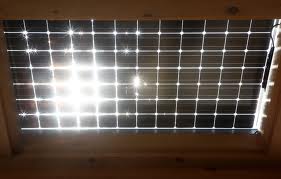Analysts at investment bank UBS have come up with a suite of policy suggestions that they say could put Australia at the cutting edge of a carbon light de-centralised electricity grid.
 In a frank assessment of the status of Australia’s renewable energy policy environment, UBS says the world is transitioning away from carbon-intensive centralised models to a carbon light distributed model.
In a frank assessment of the status of Australia’s renewable energy policy environment, UBS says the world is transitioning away from carbon-intensive centralised models to a carbon light distributed model.
The idea that Australia – one of the most carbon intensive economies in the world – could be best placed to move to a carbon light seems counter-intuitive, particularly given the political rhetoric and the strident voice of vested interests in the country.
But UBS – like other investment banks and analysts – says that the transition is inevitable as new technology turns customers into competitors, and takes control of electricity away from the industry and puts the consumer in charge.
“Mass market technology is typically characterised by rapidly falling costs, which is happening to both distributed electricity and to household storage.
“Technology also leads to very low-cost intelligent devices “the internet of things”, to lower costs of communication & control of these devices (smart meters). This presents opportunities and threats to the existing industry.“
But UBS says Australia could lead the world because its resource of solar and wind energy are better than most countries, and it has pool of “intellectual capital” that is in the forefront of the solar and communications technology world.
UBS says the move to a distributed model makes sense because Australia has a very large amount of roof area per head of population (the benefit, perhaps, of the quarter acre block and low-rise suburbs).
And it has low network density. The number of customers per kilometre of poles and wires is incredibly small, as the solar industry has pointed out. And this is making distribution and transmission relatively expensive.
 UBS argues that the current review of the renewable energy target amounts at best to “damage limitation” for the incumbent fossil fuel interests.
UBS argues that the current review of the renewable energy target amounts at best to “damage limitation” for the incumbent fossil fuel interests.
If policy settings were designed to assist the transition to the “Nu-tility” world, where distributed energy takes over from centralised power – there would be a carbon tax, subsidies for storage, incentives for rooftop PV, mandatory time of use meters and networks would be unregulated competitive businesses sharing the pain.
Few, if any, of these seven policy moves would be popular in the current political environment, UBS admits, but it sees them as essential to meet a low carbon goal.
Here they are in more detail:
1. Mandate time of use meter roll out over remaining States in the NEM (NSW, QLD, SA, TAS)
2. Reinstate the carbon tax with zero exemptions and zero compensation, but start it at a lower level, say $10/t. This would raise around $5bn of revenue and continue to discourage electricity consumption. It would send a price signal to all carbon producers, however of itself it would not induce much fuel shifting.
3. Encourage the construction of distributed PV solar on any building where the majority of the electricity consumption is during the day or where the costs of being connected to the grid are high. Examples of the former category include many Federal and State Government owned buildings, factories and warehouses. All that flat Western Sydney metal roofing is ideal for solar.
4. We would use some of the funds raised to subsidise the take-up of onsite storage and encourage grid defection and the creation of micro grids, particularly in rural areas. Network investment and pricing models would need to be sharply revised.
5. Networks in general would have their monopoly pricing status revoked. In the world of the “Nu-tility”, the network is no longer a monopoly – it competes with distributed electricity and possibly with other distribution business models. If networks put prices up too much they will face competition of their own.
6. We would incentivise closure of some brown coal fired electricity in Victoria, possibly via means of environmental regulation, but possibly with a capacity closure auction.
7. Likely continue with the current renewables target.
On the point of the RET, UBS says the annual cost of the renewable subsidy is about $500 million per year for LRET (large scale), which on the current target rises to $1bn by 2020, and around $500 million for the SRES (small scale) which UBS expects would probably rise moderately.
In comparison, as this table shows, the subsidies for fossil fuels are much higher.
“The point of the table is to show that renewable costs are not particularly egregious, a point that has been made many times.,” UBS says.
“Renewables have relatively small impact on customer electricity bills and as demonstrated by ROAM Consulting arguably have a significant impact in keeping power prices down. “
Any reduction in the RET, as recommended by many vested interests and conservative politicans and commentators, will at most reduce future supply. That means it won’t do much to lift pool prices, apart from being lower than they might otherwise be if the RET was maintained as is.











